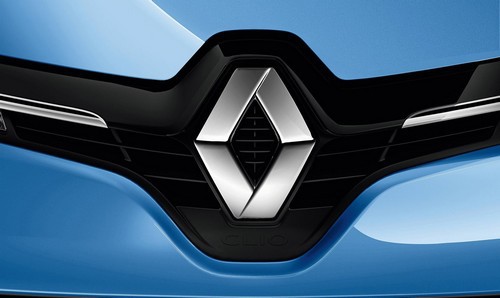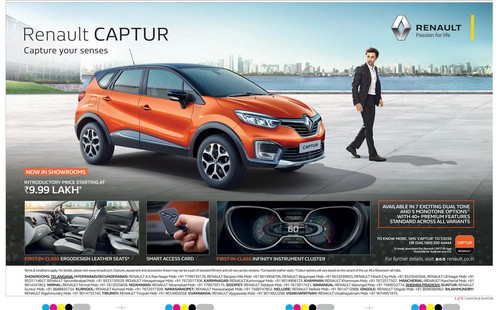The marketing mix of Renault analyses Renault’s 4Ps, including product, price, place, and promotions. Renault is a multi-brand international group associated with the automotive industry as it deals in automobiles. It is a private limited company of French origins and was founded in 1899 by its co-founders and brothers Fernand Renault, Marcel Renault, and Louis Renault. In 2016, the company was declared ninth in the world as the biggest automaker in production volume. It has entered into an alliance deal that is the fourth largest in the world’s automobile sector and is known as the Renault-Nissan-Mitsubishi Alliance. It faces competition from the following.
- Hyundai Motors
- Chevrolet
- Ford
- Honda
- Nissan Motors
- Toyota
- Maruti
- Tata Motors
About Renault
- Type: The automobile manufacturer
- Industry: Automotive
- Founded: 1899
- Founders: Louis Renault, Marcel Renault, and Fernand Renault
- Headquarters: France
- Area served: Worldwide
- Key people: Luca de Meo, CEO
- Number of employees: Over 105,812
Table of Contents
Renault Product Strategy
To meet the technological challenges head-on, Renault has created a product portfolio to be envied. It manufactures vans and cars and has been credited with manufacturing auto rail, passenger cars, buses, tanks, tractors, and trucks over the years. Renault operates in markets under Alpine, Renault Samsung Motors, Dacia, Lada, and Renault.
The new Product Mix of Renault in 2023 is as follows (Source).
- Electrification Focus: At least ten fully electric vehicles (EVs) by 2025, Aim to be a leader in electrification in Europe, Development of a new “Electro pole” in northern France for large-scale EV manufacturing, Hydrogen joint ventures for fuel-cell vehicles.
- Efficiency and Streamlining: Reduction in platforms (from 6 to 3) and powertrain families (from 8 to 4), We are launching all models on existing platforms within less than three years.
- Product Portfolio: Twenty-four new models by 2025, with half in the C/D segments, Focus on larger, more profitable vehicle categories.
- Indian Market Strategy (“Renaulution India 2024”): Investment of EUR 3 billion, Introduction of five new vehicles, including next-gen Kiger and Triber, A premium electric vehicle sharing platform with Nissan Ariya.
- MY24 Lineup Enhancements in India: Upgrades in models like Kwid, Triber, and Kiger, Improvements in features, safety, and aesthetics.
- Customer-Centric Approach: Emphasis on delivering exceptional value and experiences to Renault owners, We are strengthening positions in key markets and focusing on profitable segments and channels.
- Technological Innovation: Development of new technologies in big data and cybersecurity.
Renault Place Strategy
Renault has an international presence that has spread to several countries, including places like the United States, France, India, United Kingdom, Germany, Switzerland, Spain, Portugal, Poland, Luxemburg, Italy, Ireland, Czech Republic, Belgium, Austria, and Russia.
Renault has set up its manufacturing units and designing facilities mostly in its native region of Europe to cut down the cost prices. 75% of its manufacturing plants are located in Europe, with the rest spread over Eurasia, Africa, Asia-Pacific, Middle East, and America in places like Moscow, Chennai, Tangier, Le Mans, Sao Paulo, and Los Andes. Its headquarters are at Boulogne-Billancourt in France.
Renault has established its primary research and development center, The Renault Techno Centre at Guyancourt, with over eight thousand employees. It has a strong distribution network that includes services of dealers that help the company distribute its products in global markets.
Here’s the place strategy of Renault.
- Global Footprint Optimization: Renault focuses on high-margin markets, such as Latin America, India, and Korea, while leveraging its competitiveness in countries like Spain, Morocco, Romania, and Turkey and creating synergies with Russia. This strategic geographical focus aims to enhance profitability and market presence?.
- Streamlining Manufacturing Footprint: The company plans to rightsize its manufacturing footprint, reducing it from 4 million units in 2019 to 3.1 million units by 2025. This consolidation aims to increase efficiency and adapt to market demands?.
- Targeting Key Markets: Renault is emphasizing profitable segments and channels in crucial markets, mainly focusing on regions where it already has a strong presence or sees potential growth, such as Europe, Latin America, and Russia?.
- Investment in the Indian Market: Renault’s significant investment of EUR 3 billion in India underlines the strategic importance of this market, positioning it as one of Renault’s major export hubs and an integral part of its global portfolio?.
- Adapting to Local Market Needs: Renault’s place strategy involves tailoring its product lineup to meet different markets’ specific needs and preferences. For instance, in India, the company is introducing new models and upgrading existing ones to align with local consumer preferences and regulatory requirements.
Renault Pricing Strategy
By the end of the fiscal year 2017, Renault posted its revenues and net income at 58.77 billion Euros and 5.21 billion Euros, respectively. It has targeted families, young executives, and business people as its target customers. The company has positioned itself as a brand offering a wide range of products that would suit every individual.
It has placed a research team that conducts thorough market research about consumers’ spending habits, market position competitors, and their prices before making its own decisions about marketing strategies. It is carefully handled so that the company can make the right decisions.
Renault has been harnessing its growth in the international market by adopting a suitable pricing policy. It caters to a diversified market and has adopted a diversified pricing policy dependent on location, products, and competition.
Vehicles are divided into different segments at their onset so that it is easy to identify the target market to which they belong. Every one of its products has a clear-cut price range. The company faces serious competition from several brands and has adopted its pricing strategy accordingly. It has kept its product prices at par with the prices set up by competitors so that its prices seem reasonable and affordable to the consumer. Renault is perceived as a value-for-money brand in the consumer market.
Renault’s pricing strategy, as observed from their recent initiatives and market approaches, can be characterized by the following key elements:
- Value-Based Pricing: Renault emphasizes offering value to its customers, ensuring that the price of their vehicles reflects the features, technology, and performance they provide. This approach is particularly evident in markets like India, where Renault has made significant investments and is introducing vehicles tailored to meet local demands and preferences???.
- Competitive Pricing in Key Segments: The company strategically prices its vehicles to compete in critical segments, particularly compact and mid-size. This is crucial in markets with intense competition, where Renault aims to offer a compelling value proposition to attract and retain customers.
- Premium Pricing for Electric Vehicles (EVs): With a strong focus on electrification, Renault will likely adopt a premium pricing strategy. This approach is aligned with the higher production costs of EVs but also reflects the advanced technology and environmental benefits these vehicles offer. The strategy is positioning these EVs as not just transportation means but as technologically advanced, eco-friendly solutions.
- Dynamic Pricing for New Markets and Segments: Renault adapts its pricing strategy based on market dynamics, regulatory environments, and consumer preferences. This dynamic pricing approach effectively allows Renault to enter new markets and segments, responding to local economic conditions and competition.
- Cost-Effective Pricing for Emerging Markets: Renault aims to offer cost-effective solutions without compromising on quality in emerging markets. This involves balancing cost efficiencies with customer expectations, ensuring that vehicles are affordable yet meet the standards and preferences of consumers in these markets.
Renault’s pricing strategy reflects value-based and competitive pricing adapted to market segments and geographical regions. It’s a strategic approach that balances the company’s global aspirations with local market realities, ensuring relevance and competitiveness across its diverse product range.
Renault Promotion Strategy
Renault has adopted a comprehensive marketing strategy and policy and has taken advantage of every marketing tool to create greater brand visibility. It has launched its ad campaigns via magazines, billboards, hoardings, motor shows, rallies, and public displays. The brand is aware of the importance of social media platforms and displays all product details, advertisements, and relevant information via its official website.
It has been a significant promoter and sponsor of rally events and racing. Renault has been the winner of the European Rally Championship in the years 2005, 2004, 1999, and 1970. Its cars have won the European Car of the Year award in 2006, 2003, 1997, 1991, 1982, and 1966. It has won national-level awards in places like Denmark, the United States, Ireland, Australia, and Spain. Renault has won Autobest Car of the Year awards for its Symbol, Logan, and Duster models.
It has entered into several sponsorship deals. It has a three-year deal in the Australian Football League as a Port Adelaide Football Club sponsor. Renault has sponsored the BFI London Film Festival, Marrakech Film Festival, Venice Film Festival, and Cannes Film Festival. It has actively participated in CSR activities by campaigning for road safety and education via scholarships.
Some Recent Video ads and Print ads for Renault are:
Liked this post? Check out the complete series on Marketing Mix

